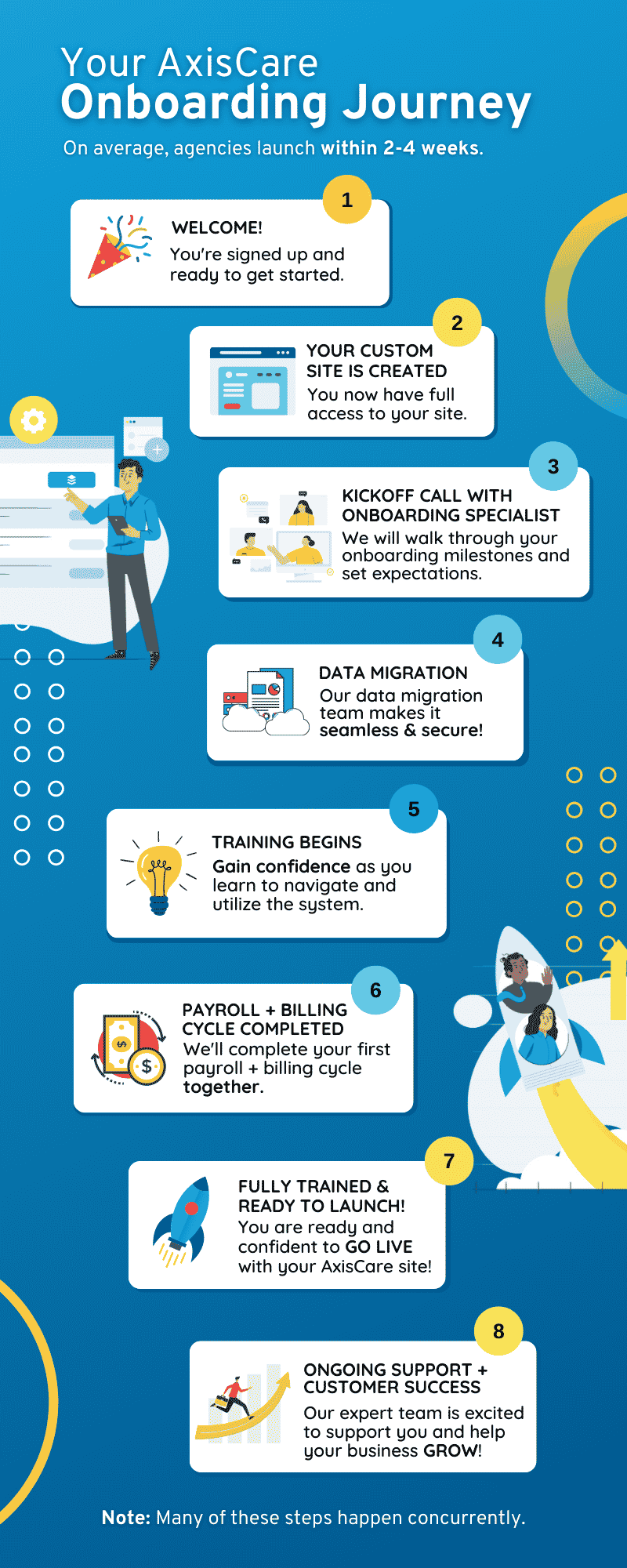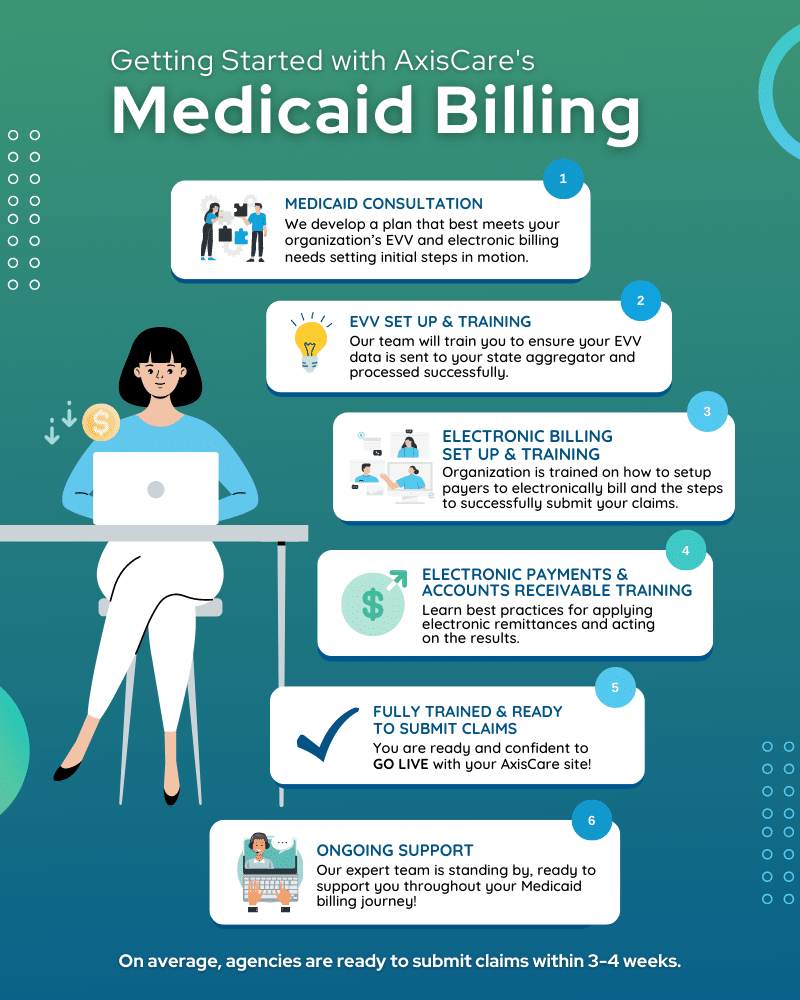Tip Sheet: The Most Productive Referral Sources for Home Health Care
There are two types of customer leads in the world of sales and marketing. Outbound leads are solicited through channels like online advertising and cold calling, whereas inbound leads come to you. Both are an important part of a business’s marketing strategy, but inbound leads can be particularly valuable as they require less proactive outreach on the company’s part.
Referrals are one such inbound channel. In a home care context, agencies reach out to health and community organizations that serve their client demographics. Over time, they forge relationships with these groups, building a network that can send potential clients their way if they are deemed a good fit for an agency’s services.
This piece will explore how to build a successful home care referral program with partners such as healthcare providers, community organizations, and even your own client roster.
Why Referral Sources Are Critical for Home Health Care Growth
Referrals are an inherently relationship-driven channel: they are passed on by word of mouth and delivered by someone potential clients already know and trust.
According to a recent survey by Nielsen, 92% of respondents trusted recommendations from friends and family above all other forms of advertising; the same privilege is usually afforded to other close contacts in people’s networks. And given the highly personal nature of home care, families are more likely to consider an agency vetted by others in their community compared to a one-dimensional flyer or pamphlet.
As mentioned above, referrals are associated with much lower client acquisition costs. Aside from the initial time investment of researching and reaching out to local groups, plus some relationship maintenance every now and then, your network should more or less run itself.
Exploring the Top Referral Sources for Home Health Care
Let’s dig into how to attract and retain home care clients with a diversified network of referrers. If this is a new marketing strategy for your agency, you can always start with a single referral category, then slowly branch out as you continue to learn and refine. The goal is to build a resilient web that will help you grow your roster sustainably, even as the economy fluctuates, to create predictable pipelines of new clients.
Past and Current Clients
The most trustworthy referrers are your past and current clients, who have solicited your services. They can provide firsthand accounts of their experiences and attest to the quality and thoroughness of your care.
To grow and nurture this channel, demonstrate gratitude with thank-you notes, small tokens of appreciation, or referral incentives (i.e., bonuses for successfully onboarded clients or gift cards). Ask for testimonials and reviews when clients express satisfaction, and most importantly, deliver exceptional, consistent care that naturally inspires clients to recommend your services.
Healthcare Providers
Doctors, nurses, and hospital discharge planners are arguably the most direct referral source for agencies. They interface with clients throughout their stays at a hospital or clinic, then coordinate outpatient plans that frequently require at-home support.
Collaborating with these sources is key to preserving the continuity of clients’ care, leading to improved outcomes and overall satisfaction. When interacting with healthcare providers, deliver consistent, professional updates focusing on client progress to demonstrate your value and keep those referrals coming.
Given the intense, high-pressure nature of hospital and clinic environments, agencies must also be reliable and responsive when these sources contact them. Otherwise, they may simply deem it easier to look elsewhere.
Community Organizations
Community touch points like senior centers, social workers, and geriatric care managers interact with older adults every single day. They exist to serve and understand their physical and psychosocial needs, making them a perfect channel to send referrals your way.
Agencies can get their foot in the door and cement themselves as trusted experts by hosting educational workshops at senior centers, covering topics like at-home safety, caregiver stress, or dementia care. Organizing a health fair or wellness day in partnership with these groups can also get the word out, for example, offering free blood pressure checks or care consultations.
You can also connect with social workers and geriatric care managers through events like lunch-and-learn sessions or community resource panels.
How to Build a Referral Program That Delivers Results
Ready to create your home health referral program? Start by determining where you’d like to focus your initial efforts: clients, healthcare organizations, community partners, or a combination thereof. The answer will depend on the relationship you have with your client roster and the availability of health and community connections in your area.
Next, choose the incentives you’d like to offer network members. It could be a gift card, a service discount, or even recognition on your website if you choose to create a “partner” section or spotlight. No matter the reward, the process should be simple: create a referral form on your website that’s easy to find and use.
The Role of Technology in Home Care Referral Programs
Once the groundwork has been laid, it will be time to monitor your progress. Home care marketing software often includes tracking features to help you understand how many referrals are coming in, where they are coming from, and how many are converting into clients.
You can then use that data to focus your expansion efforts based on what’s working well. These platforms can also handle the little stuff, like sending automated thank-you notes.
Overcoming Challenges in Managing Referral Sources
You won’t be the only home care provider in the area with a referral program; many agencies are often vying for attention from the same pool of referrers. It’s a sphere of intense competition, but as is true with any marketing effort, there’s always the potential to rise above the noise.
If you want to stand out, you’ll need to communicate what makes your agency different from the rest. Whether it’s quick response times, specialty care programs, or impressive client satisfaction rates, lead with what sets you apart – or risk getting lost among the noise. Another best practice is to invest in a customer relationship management system – or CRM – to measure the effectiveness of your outreach efforts. When possible, in-person check-ins, educational visits, or co-run events can deepen partnerships in a collaborative and personal way.
Improve Your Home Care Referral Process With AxisCare
AxisCare is designed to help home care agencies optimize every element of their operations, including referral programs. Book a free demo to learn how we can help you manage your referrals and make sure you’re concentrating your efforts in all the right places.





